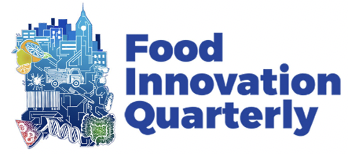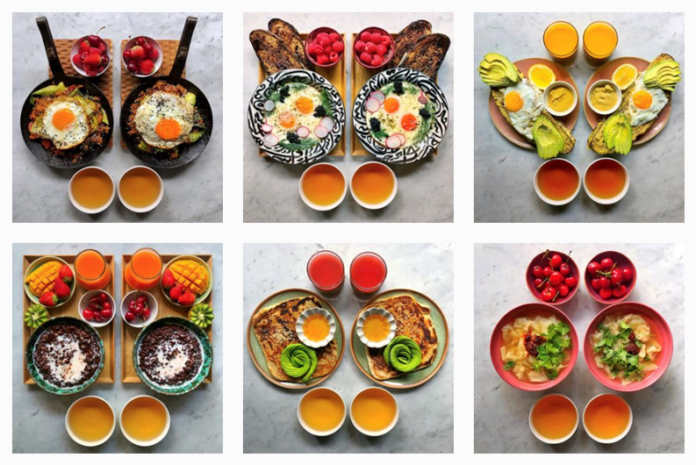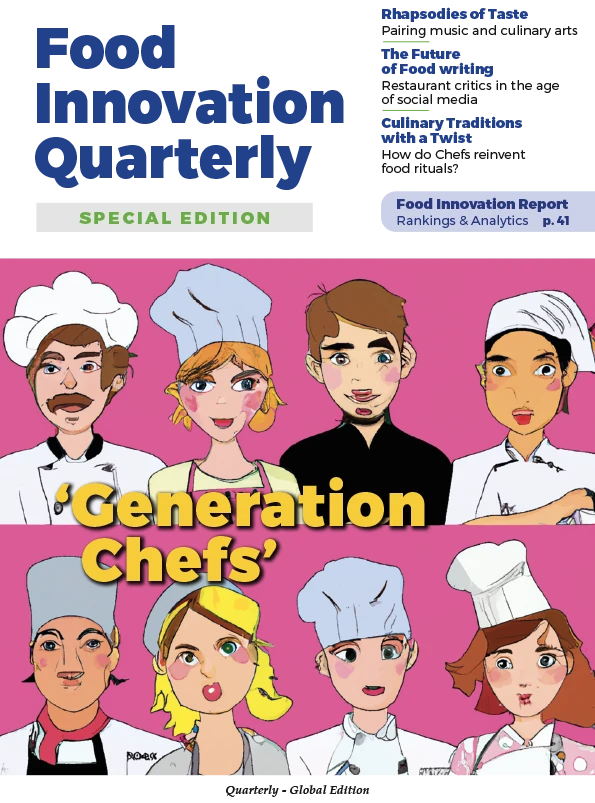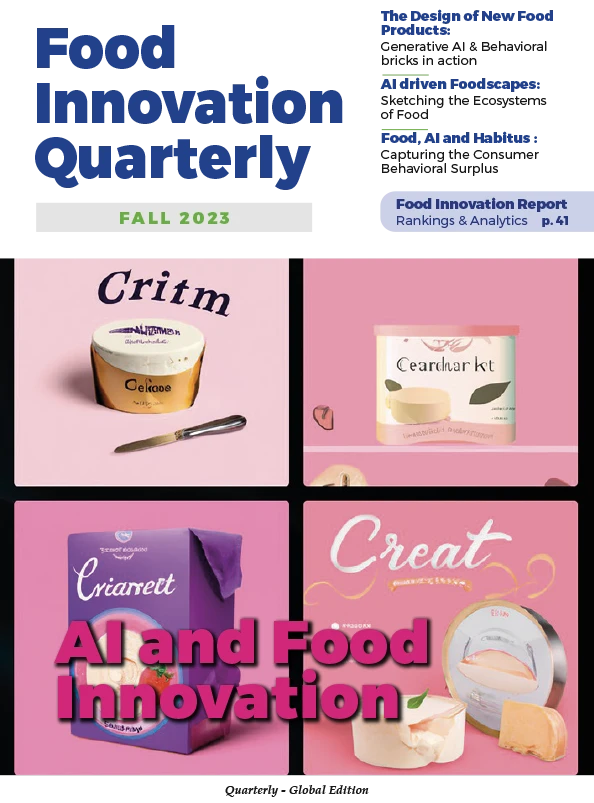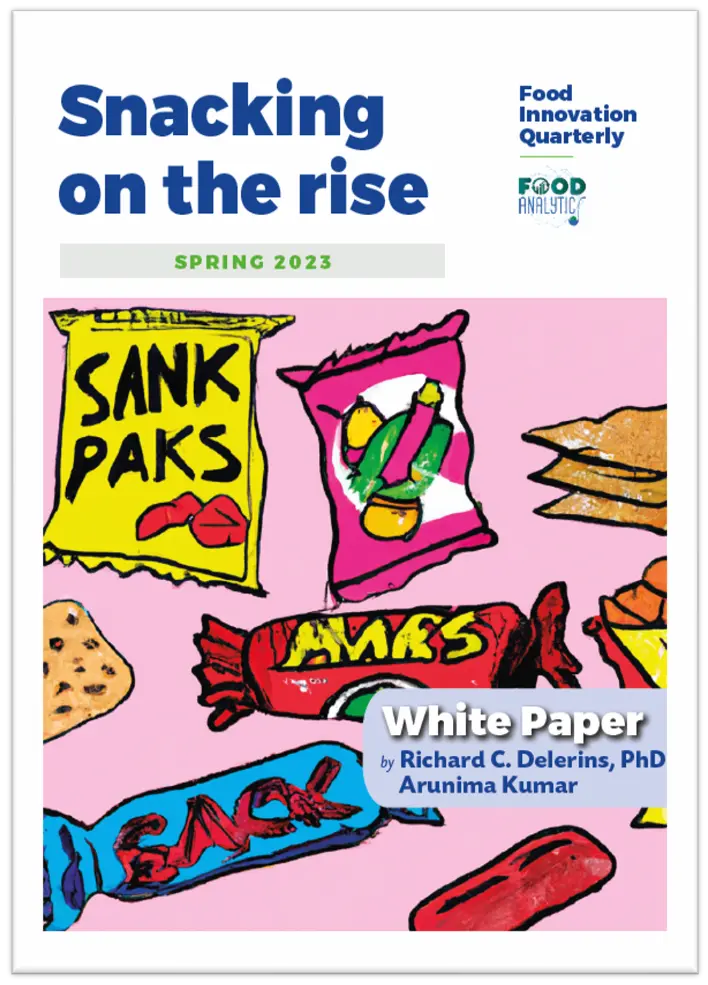Simply the first meal of the day, for some, breakfast makes them want to jump out of bed in the morning. For others, it gets lost in the busy rhythm of life. But has the significance of breakfast transformed throughout its passage from generation to generation?
Legend says that breakfast is the most important meal of the day. While being a breakfast lover or a skipper might be seen as a personality trait by some, semantics are here to tell us that everyone is, in fact, a breakfast eater. For starters, linguistics help uncover the different connotations attached to the meal.
In English, ‘Breakfast’ is a compound word consisting of ‘Break’ and ‘Fast’ where fast comes from ‘fasting’ or going a long period of time without eating. Breakfast then simply means resumption of eating after a long gap from the last meal, dinner. In Spanish, to eat breakfast is desayunar. ‘Des’ means to stop or undo, and ‘ayunar’ is the Spanish verb for fasting. Therefore, desayunar means to stop fasting.
The French word ‘déjeuner’ (via late-Latin disjejunare translating to ‘un-fast’) also has the same structure and means lunch, the first big meal of the day, except ‘petit’ was later added to indicate the small snack traditionally eaten in the mornings. In German, the word for breakfast is Frühstück, consisting of ‘früh’, meaning ‘early’ and ‘stück’, meaning ‘piece’ or ‘item’ together meaning an ‘early item of food’.
In Italian, the word colazione from the latin roots of ‘collationem’ means ‘collation’ and originates in the Roman Catholic church where it refers to small meals allowed on days of fasting, the first one being prima colazione, the word for breakfast in modern Italian. The Hindi word for breakfast, nashta (नाश्ता), comes from the Sanskrit, anasita, (अनाशित) which means hungry or famished. To take nashta is to tackle hunger.
Thus, breakfast seems universal and, on the surface, it might not appear as an emotional act, but a closer look would reveal otherwise. Consider the Western world’s five well known forms of breakfast: the English Breakfast, the French “Petit déjeuner”, the Mediterranean colazione, the Oslo/Swiss Breakfast and the American Breakfast.
Looking at the variegated formulation, place and time of consumption and the level of sociability associated to these ‘Famous five’, allows one to better comprehend the emotional depth of this complex meal.
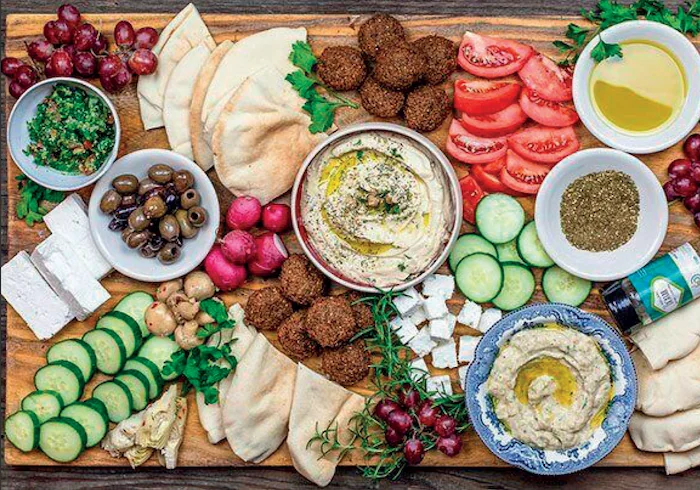
Primarily the meal of children, workers or the working class, the Egg+3B (Bacon, Beans, Bread) English Breakfast is easy, inexpensive and nutritious. With the same formulation dating back to the 1800s when the fried breakfast became popular in the Victorian Era especially through Home economist, Isabella Beeton’s Book of Household Management (1861), it is like a piece of history being preserved through the years. Usually eaten together at home and neither too quickly nor too slowly, the English breakfast is one of the most internationally recognised British dishes and adapts well to the changing times by embracing veggie-friendly versions and looking highly ‘Instagrammable’ through its colourful components.
On the opposite end of the breakfast spectrum lies the French ‘Petit déjeuner’ also known as ‘Continental breakfast’ which is quintessentially light, has limited, quick, ‘grab and go’ options and is mostly enjoyed alone. ‘Petit déjeuner’ literally translates to small or mini lunch. The French breakfast is not a real meal but an individual moment (a “Me Time”) before starting the daily grind. Normally consisting of coffee, a croissant or a pain au chocolat or even a slice of baguette with butter or jam, the French keep it sweet and simple.
An assortment of fruits, vegetables, dairy, nuts, seeds and grains, The Mediterranean Colazione is far from being the ‘Plain Jane’ of breakfasts. Usually taken at home and with family and friends, it is a moment of socializing and sharing. Rather than simply for sustenance or nourishment, breakfast is an opportunity for interaction. One of the essential features of the Mediterranean diet, which has stood up to the constraints of modern everyday life, is the time taken over the meal and the social practices of conviviality.
In the 1920s, a new school meal called the “Oslo Breakfast” consisted of bread, cheese, milk, half an apple and half an orange. Around this time, poverty was still widespread in Norway and food scientists wanted to create the most nutritious breakfast especially for school going kids. The Swiss breakfast is almost the same in formulation and also includes muesli and yogurt. Since it was originally meant to be consumed in schools by students, it is more of a social act than a personal one and the duration is neither too short nor too long.
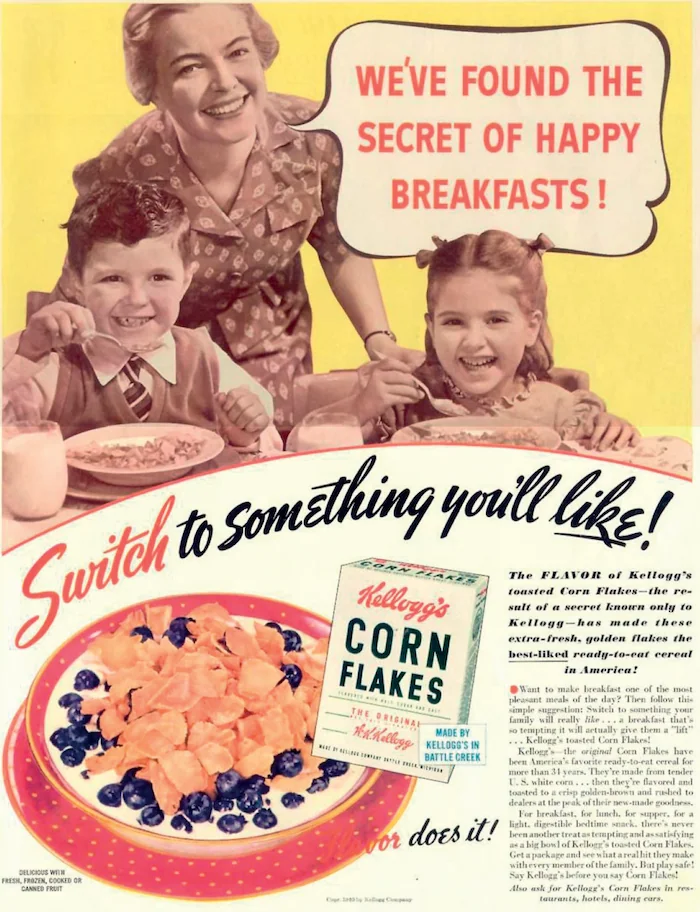
Finally, there’s the American breakfast which has undergone various developments over the years. It started with a focus on energy and health with the iconic Kellogg’s cornflakes, ‘the breakfast of champions’. Orange juice was and still is an indispensable part of the meal. Eventually the peanut butter craze arrived hence birthing the famous PB&J (peanut butter and jelly/jam) sandwich. The classics like pancakes and waffles remain in the mix. Typically taken at home, in under 30 minutes, with family, the American breakfast lies somewhere in between the French simplicity and Mediterranean diversity.
Therefore, traditionally, the breakfast moment holds a unique significance in different cultures and is the result of an amalgamation of centuries of practices. However, as geographical boundaries increasingly disappear, the cultural divide is transitioning into a generational one. Millennials, with their faster pace of life, are turning breakfast into a ‘me-time’ activity. It is frequently shared with loved ones virtually but only occasionally in person. Thus, the crucial role portrayed by social media in their lives makes it the perfect place to get insights into ‘Generation Me! Me! Me!’s breakfast consumption habits.
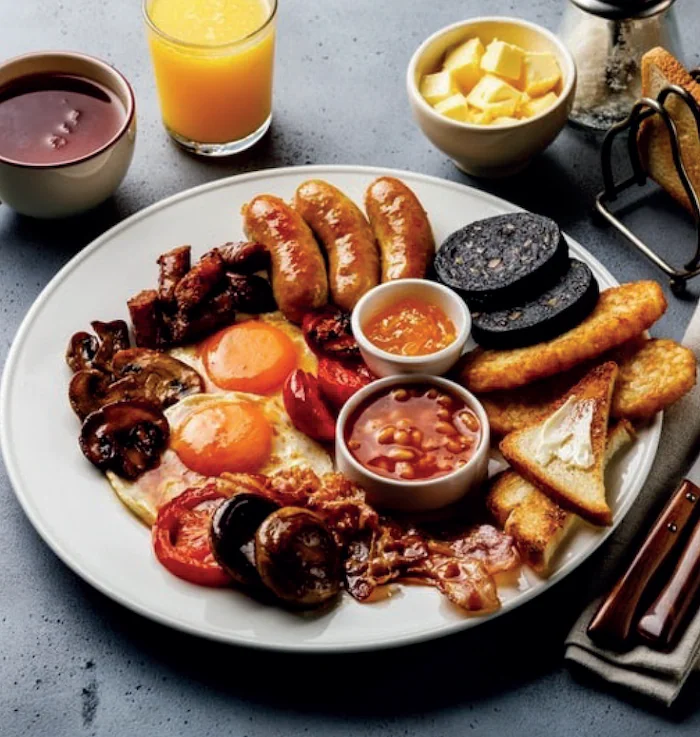
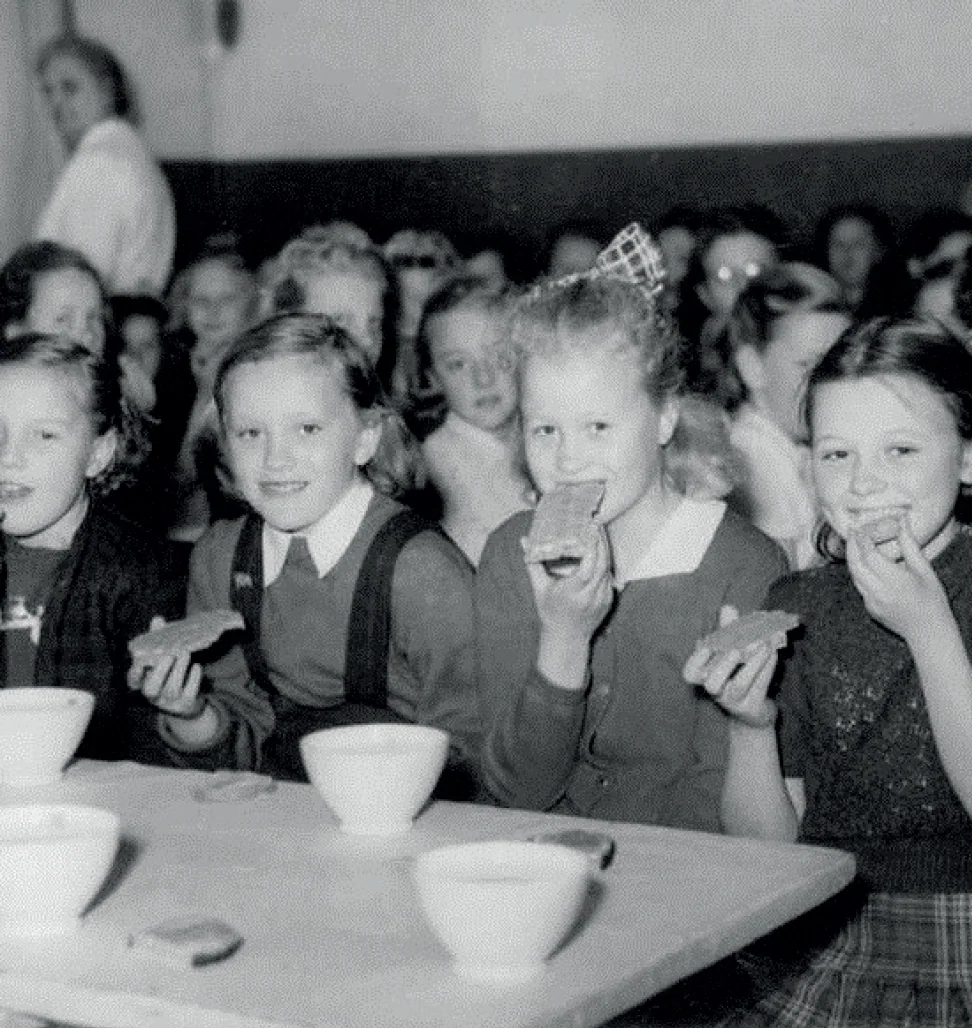
Labelled as the most misunderstood generation of all time, millennials are those born between 1981 and early 2000s. Like any other generation, they have priorities, but these have evolved: traditional signals of adulthood, ‘success markers’, such as having kids and owning homes, are not their top priority.
Instead, they are much more interested in traveling and discovering the world. They want to make a positive impact in their communities before making families and they value spending their money more ethically.
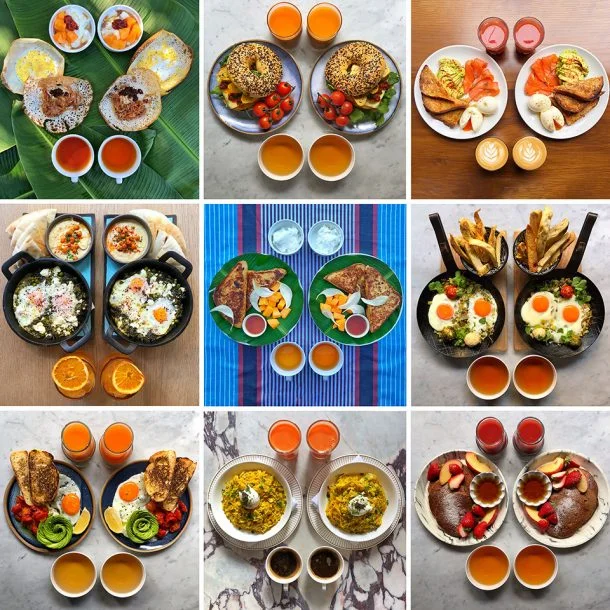
This generation spends more money eating out, and less time preparing food at home: they search for convenience over food preparation, presentation, and clean-up: ‘millennial preferences for convenience may be a principal characteristic of this generation’. More than three-quarters of millennials buy breakfast food or drinks, and their away-from-home breakfast consumption is not slowing down.
Instagram breakfast accounts are a crowd favourite among the millennials, indicating their curiosity towards learning what their peers start their day with. However, it is not simply about getting inspiration from these accounts for their own breakfasts but also about supporting what these accounts stand for Symmetry Breakfast.
Michael Zee’s blog and Instagram account with 710k followers, is where he documents the diverse breakfast plates he makes for his boyfriend and himself which are identical in every way. Following Michael is not just about looking at his aesthetically mind-blowing creations or replicating them, but also about being an LGBTQ+ ally.
Smoothie Bowls, is a collection of the most stunning looking smoothie bowls from around the internet where its 525k followers go for their early ‘morning musings’, ‘health goals’ or even ‘good vibes’.
Hashtags such as #breakfastporn, #yolkporn suggest that for this generation, food is no longer just a source of energy but an object of fantasy. Not only should the food be beautifully presented and aesthetically pleasing but also offer an overall sensory experience with dripping yolks and crackling toasts.
Health is at the forefront of their choices as suggested by the trending #healthybreakfast which has over 6.7 million posts under it.
The rising popularity of professionals like the Culinary Scientist, Jessica Gavin (69K followers) and Erin, The Food Science Babe (224K followers) indicates the value Millennials place in health & nutrition facts. As the body of evidence linking high protein to more satiety is growing, millennials are already ahead of the curve. Having made a significant departure from their predecessor’s breakfast habits which were primarily focused on processed sugary carbohydrates often disguised as cereal, millennials prefer protein rich foods like a yogurt bowl, energy bars or good old eggs to start their day. Superfoods like acai, curcuma, spirulina etc. also recurringly appear on café menus to cater to this clientele.
The breakfast/brunch menus of popular coffee hotspots always have a few vegetarian and vegan breakfast options indicating the high demand for these products by the generation. The popularity of food bloggers such as ‘Deliciously Ella’, which started off as a vegan food blog and has blown up into a full- fledged eatery in the UK; and the hashtag #veganbreakfast can be attributed to a rising consumption of plant-based foods, mostly for environmental reasons. This generation is more conscious and vocal about the impact of their dietary choices on the environment in comparison to their predecessors as the climate issue takes center stage in the mainstream communication. Millennials are willing to pay more for ethically sourced food and the ones that are not ready for a full-time commitment to a vegan or vegetarian diet are still keen to integrate more plant-based meals in their routines. Breakfast makes it easy to do so.
This globalized generation isn’t bound by geographical restrictions. Access to recipe aggregators and platforms such as ‘I am a Food Blog’, ‘Breakfast Criminals’, ‘Tastemade’, ‘Food52’, ‘The Feed Feed,’ and cooking channels on YouTube and TikTok with creators and contributors from all over the world makes the breakfast of this generation pretty diverse.
Millennials take on average 39 minutes deciding what to eat for breakfast: ‘it’s the specifics that take time: wholegrain or brown bread, almond or goats’ milk, smashed avocado or sliced eggs’? They’re looking for global food and ethnic food from different parts of the world appeals to them. It’s breakfast burritos on Monday and Shakshuka on Tuesday and maybe plain old overnight oats for Wednesday. They like to try new flavours, textures, toppings and unexpected combinations. Food is seen as an opportunity for exploration.
Millennials try an average of 46 new foods per year. With an affinity for the immediate, they look for products that are practical, quick and easy to prepare. A heightened ‘Sense of Self’ makes food a mode of self-expression through which they can showcase different facets of their personality. Therefore, the most intriguing characteristic of the generation from a breakfast perspective is this Threefold Individualization: eating breakfast that is unique in its formulation, consumed in a unique moment and mostly consumed alone.
Thus far, a singular typical millennial breakfast cannot be defined. The breakfast habits, however, can be classified into more actionable clusters which help in grasping the breakfast needs of the generation with greater precision.
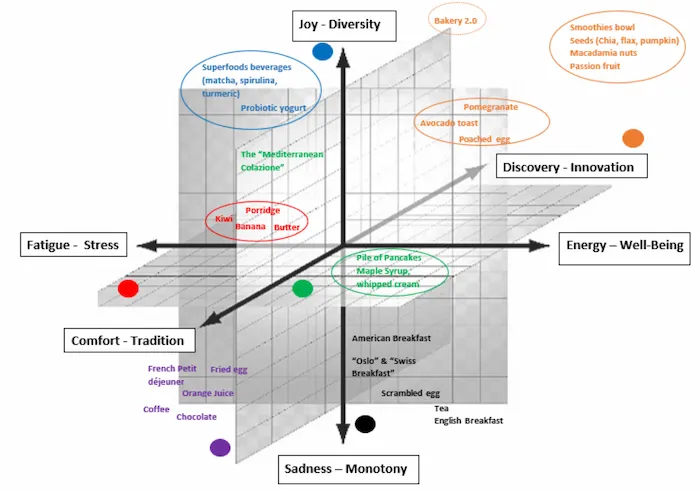
Using the above insights, a few recurring global millennial breakfast items have been mapped on a 3-dimensional graph with the following 3 axis:
The Emotion Axis, developed by studying emoticons, words, texts expressed towards breakfast, consists of Joy on one end and Sadness on the other. While Joy is tied to diversity in formulation, Sadness is tied to monotony.
The Energy Axis, consisting of Fatigue/Stress on one end and Energy/Well-Being on the other because we eat to go from one state to the other.
Tradition/Innovation Axis, with Discovery/ Innovation on one end and Comfort/Tradition on the other, assessing the inventiveness of the dish in question.
Along with the 5 classic breakfasts (Famous Five), common millennial breakfast items have been considered for the analysis. These include: Poached eggs, scrambled eggs, avocado toast, pancakes, various fruits, superfood beverages, porridge, coffee, tea and so on.
Into the Clusters
With respect to the three dimensions, clusters have been created by grouping closely mapped breakfast items together. The Famous Five classic breakfasts, as expected, are oriented towards monotony, tradition and comfort whereas the new clusters identified are more towards innovation and diversity. The favoured culinary technique identified is ‘assembly’, like in the creation of smoothie bowls or porridge or toasts. Thus, overall, five existing clusters and one potential cluster have been derived. The clusters are named according to their composition and the emotion emanating from them.
Superfood beverages and probiotic yogurts make the ‘Boost My Health’ cluster. These foods are often consumed in a state of fatigue or stress to achieve energy, they are diverse in formulation in terms of the flavour variety available and though centuries old in their niche markets, they are new and innovative for the global consumer.
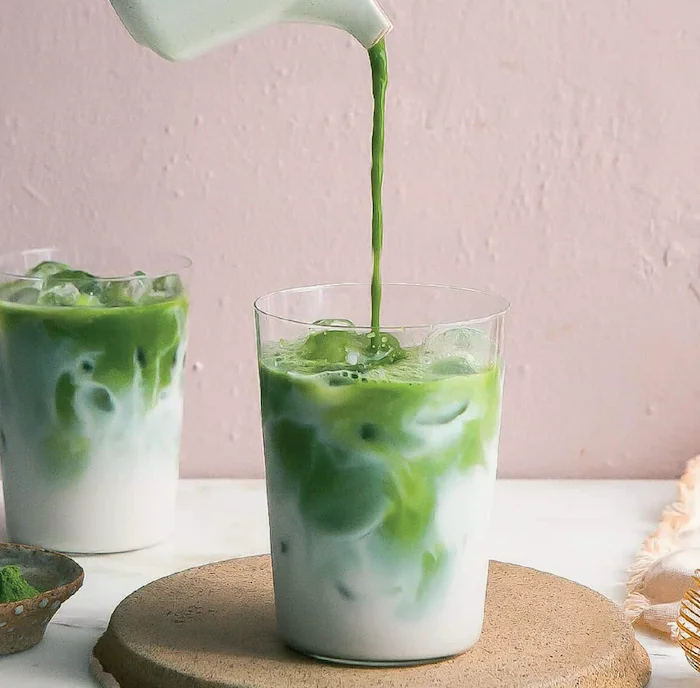
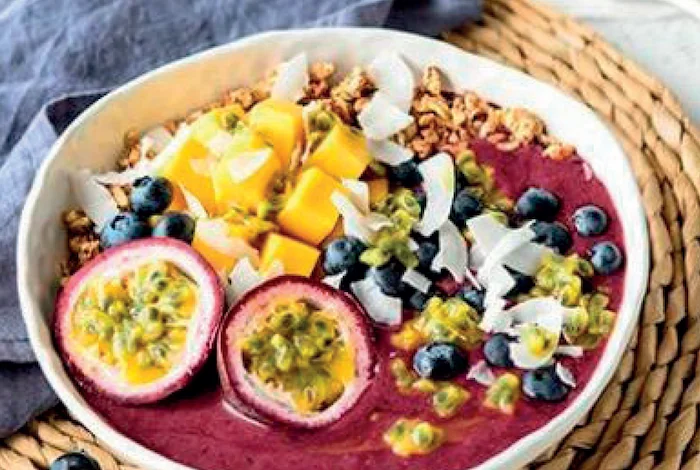
With endless possibilities, at the height of diversity, is the ‘Trendy Catchy’ cluster including smoothie bowls, seeds, macadamia nuts, passion fruit. It is also positioned at the top on the discovery/innovation axis because these foods have only recently become mainstream thanks to their visibility on social media. The cluster name is chosen to reflect this eye-catchiness and popularity.
Avocado toast, pomegranate and poached eggs form the ‘Rose & Green’ cluster, named so to reflect the colour of a ripe avocado, a dripping yolk and the vibrant fruit as the innovative topping. This cluster, thus, falls at the centre of diversity, innovation and well-being. It is international, tasty and healthy, thus seen in regular rotations in the millennial morning routine.
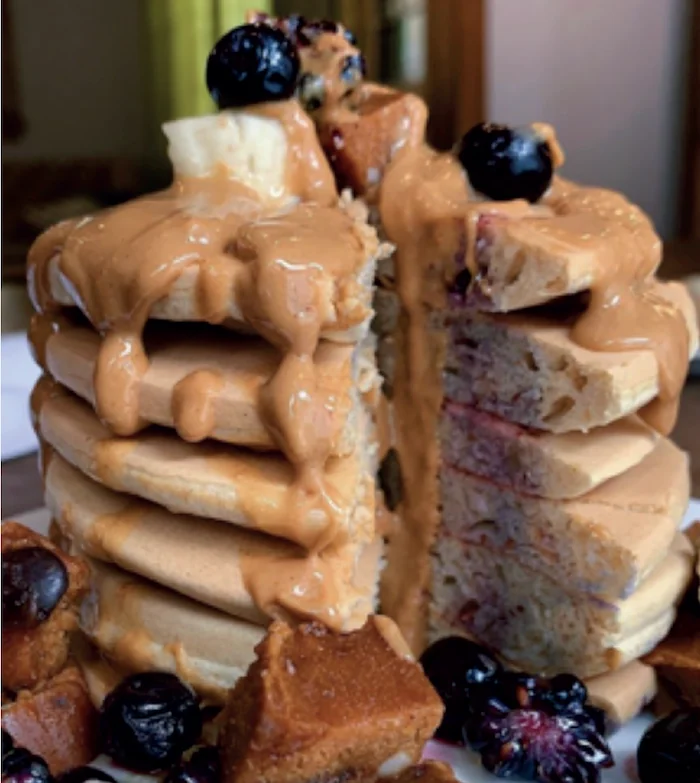
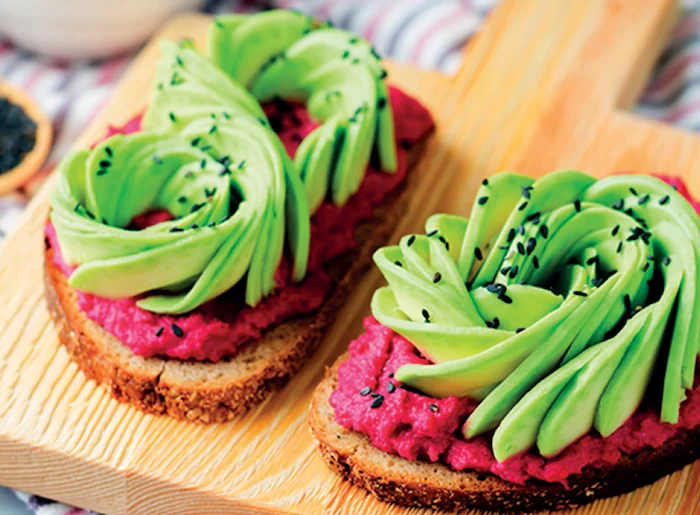
A pile of pancakes, maple syrup, whipped cream are all the foods that signify indulgence for the millennials and hence the fourth cluster is called ‘Guilty Pleasure’. These foods are all about childhood and nostalgia, placing the cluster closer to comfort and tradition. They can be made diverse by mixing up the toppings but inherently it’s a monotonous classic thus positioning it in the middle of all the axes.
‘Ultimate Winter Tradition’ is composed of porridge, kiwi, banana and all types of nut- butters, all painting a picture of a cozy winter morning. This is why it is positioned at the intersection of fatigue, comfort and diversity. Diversity because you can put whatever you want in your porridge, and express your personality.
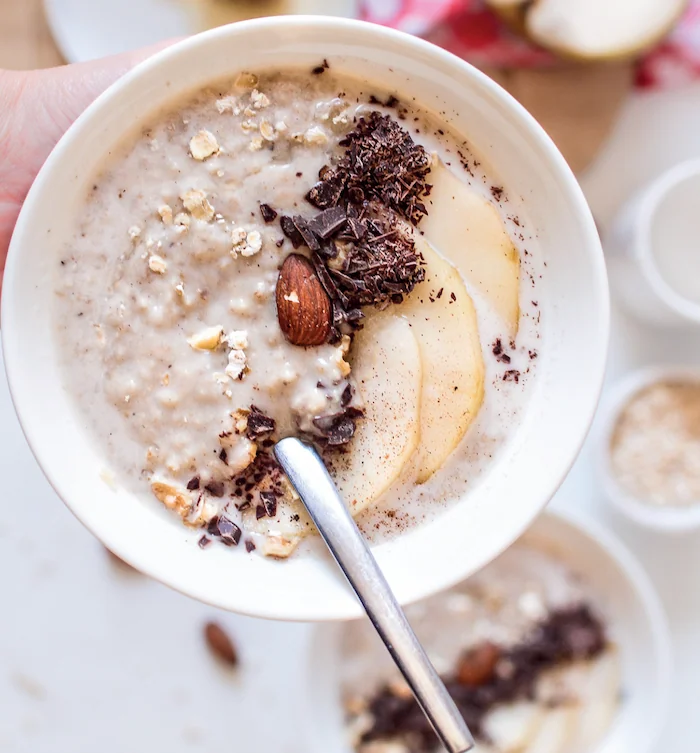
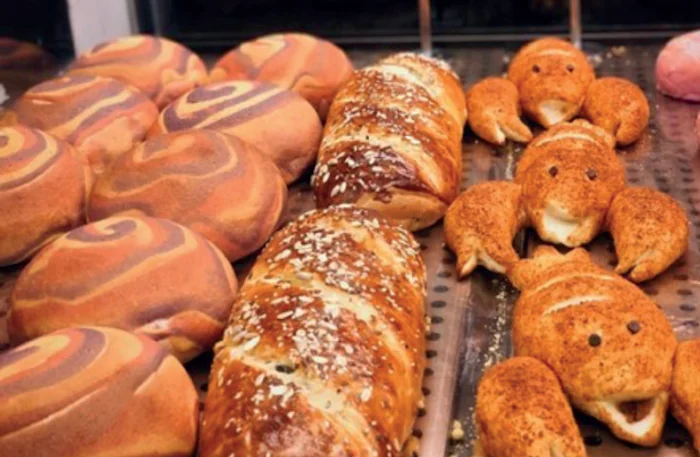
‘Bakery 2.0’ is the final cluster which is just beginning to define itself. With dirty bread and dirty matcha, the latest bakery crazes in Asia, this experimental and sensory approach to bakery is what piques the interest of millennials.
Thus, grouping the main breakfast foods of millennials from around the world into more comprehensible segments, these clusters are reflective of their unique threefold individualization characteristic. However, could it be that millennials are reinventing breakfast? It is obviously not a new concept to feed yourself first thing in the morning but it is definitely new to assign a contemporary meaning to this moment. No longer just a meal, breakfast surely is a palette of creativity for this generation. It’s a blank canvas, an opportunity to decide how their day will be and who they choose to be today with what they decide to put on their platter (or palm, for the busy bees) in the morning. They choose the meals depending on their emotions, their state of mind, their feelings, and their guts. Hence, there are millions of possible combinations, and each combination can be attached to the identified clusters in order to better define the consumers.
Breakfast 2.0 is definitely a reinvention more than it is a sequel, opening new possibilities for creativity and subsequently for marketing. The consumer demands a ‘show’ and the Food & Beverage industry is totally here to ‘play’ their part.
